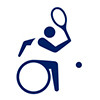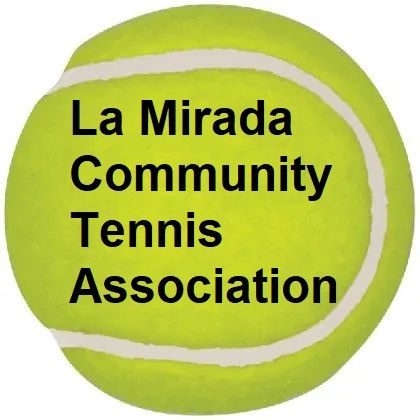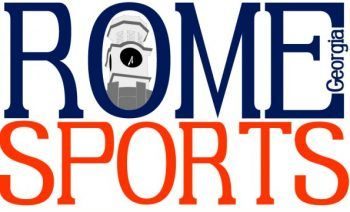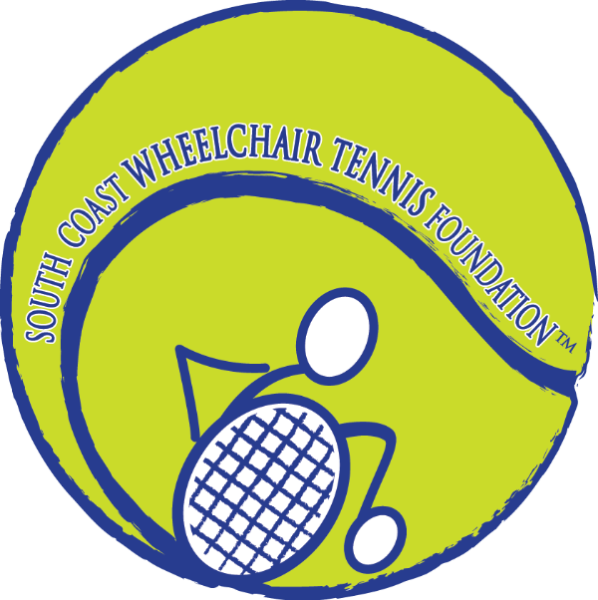 a Summer Games Paralympic Sport
a Summer Games Paralympic SportGoverning Bodies
International Governing Bodies

International Tennis Federation (ITF)
National Governing Bodies
United States

United States Tennis Association (USTA)
Membership Requirements
Current Calendars / Rankings
Uniqlo Wheelchair Tennis Tour
2023 Tournament Calendar
Current World Rankings
Men’s
Women’s
Quad’s
USTA Wheelchair Tennis Tour
2023 Tournament Calendar
Current USA Rankings
Men’s Open
Women’s Open
Quad
Coed 18
Coed A
Coed B
Coed C
Coed D
Introduction:
Wheelchair tennis is a form of tennis adapted for wheelchair users, and it is played on regular tennis courts that you will find at any public park or private club. The only main difference in the way wheelchair tennis is played compared to able-bodied tennis is that players competing in a wheelchair are entitled to two bounces of the tennis ball on their side of the court rather than one. All other lines on the court are the same and the same height of the net is used.
There are three main categories in wheelchair tennis, Men’s, Women’s, and Quad’s; each of these categories has singles and doubles tournaments. In the early days of the sport each category was divided into divisions ranging from Open (highest), A, B, C to D (lowest). Today only the Open divisions of the Men’s and Women’s categories are played exclusively by each gender. All other divisions have become Coed divisions.
The Quad division (quadriplegic), is for players that have substantial loss of function in at least one upper limb, and may include various disabilities besides quadriplegia. As the newest division in wheelchair tennis it has recently sometimes been called Mixed, especially at the Paralympic Games.
Quad players as they are known were originally mainly players that competed in the sport with greater limitations in their abilities compared to those of their Men’s and Women’s counterparts, and players would often tape the rackets to their hand, to compensate for loss of function, some players would compete in electric-powered wheelchairs, and even some one-armed players would compete in the division. In today’s Quad division their is a great debate that goes to the very core of the sportsmanship know in wheelchair tennis since its inception, as players with what most would consider “minimal” limitations have inundated the division to claim the equal prize money that has been offered to its competitors.
History of the Sport:
Wheelchair tennis was founded in 1976 when Brad Parks first hit a tennis ball from a wheelchair and realized the potential of the sport. Former acrobat skier Parks suffered an injury which left him paraplegic but met wheelchair athlete Jeff Minnenbraker during his rehab and the two started discussing the possibilities of wheelchair tennis.
In early 1980, the National Foundation of Wheelchair Tennis (NFWT) was formed with Brad Parks, David Saltz, Jim Worth and Dave Kiley as the first Board of Directors.
The Wheelchair Tennis Players Association was formed the following year and the first “Grand Prix Circuit” was established consisting of a series of four major events in different cities across USA.
France became the first country in Europe to put a wheelchair tennis program in place in 1982. Popular French professional players such as Yannick Noah and Henri Leconte assisted with high profile up-down exhibitions where a wheelchair tennis player teams up with a non-disabled partner.
In 1987 wheelchair tennis is officially included in the Wheelchair Games at Stoke Mandeville, England for the first time with 30 men and seven women representing ten nations.
Soon after the ITF was approached to assist in developing an international governing body for wheelchair tennis, which sparked the interest of ITF Director of Development, Doug MacCurdy and Brian Tobin, Executive Vice President of the ITF.
On Monday 10 October 1988, the International Wheelchair Tennis Federation (IWTF) was founded at a meeting during the US Open.
Through the efforts of John Noakes of the International Stoke Mandeville Wheelchair Sports Federation (ISMWSF), in conjunction with Doug MacCurdy and Eichii Kawatei of the ITF Committee of Management, a demonstration of wheelchair tennis was included in the Paralympics in Seoul, South Korea with four men and four women competing. The success of this event led to wheelchair tennis being included in the 1992 Paralympic Games.
In 1991 NEC joined as a major sponsor of the IWTF, providing funding to formalize the ITF Wheelchair Tennis Tour and Ranking, along with a host of other programs.
Prize money was awarded at the US Open for the first time and the Wheelchair Tennis World Champions were recognized by the ITF for the first time alongside their non-disabled counterparts.
The first formalized ITF Wheelchair Tennis Tour began in 1992, consisting of 11 international tournaments.
The inaugural NEC Wheelchair Tennis Masters took place in Eindhoven, Netherlands in 1994, with the top eight men’s and women’s players competing.
On 1 January 1998 the IWTF was fully integrated into the ITF, making wheelchair tennis the first disabled sport to achieve such a union at international level. The International Wheelchair Tennis Association (IWTA) is formed to represent wheelchair tennis governing bodies across the world and the IWTF is disbanded.
The first official quad ranking was published in 1998 and a quad event is included at the World Team Cup for the first time.
In 2000 a junior division was included at the Invacare World Team Cup for the first time, and the first NEC Wheelchair Tennis Doubles Masters event was staged in conjunction with the NEC Masters in Amersfoort, the Netherlands.
In 2004 the Johann Cruyff Foundation became an ITF Wheelchair Tennis Partner, to support the further development of an international junior wheelchair tennis program.
Since 2007, wheelchair tennis has been played at all four of the Grand Slams (Australian Open, French Open, Wimbledon and U.S. Open).
The London 2012 Paralympics Games, the most successful Paralympics ever, saw the Paralympic Tennis Event held at Eton Manor, a brand-new tennis center at the Olympic Park, on 1-8 September. A total of 112 players from 31 countries took part.
The BNP Paribas World Team Cup took place in Asia for the first time, when Seoul, Korea Republic, hosted the ITF’s flagship wheelchair tennis team event.
In 2014 UNIQLO became the title sponsor of the UNIQLO Wheelchair Tennis Tour, which was formerly the (NEC Wheelchair Tennis Tour). NEC is still the international sponsor of the NEC Wheelchair Singles Masters.
Rules – How to Play the Sport:
The game of wheelchair tennis follows the ITF Rules of Tennis with the following exceptions.
- The Two Bounce Rule
The wheelchair tennis player is allowed two bounces of the ball. The player must return the ball before it hits the ground a third time. The second bounce can be either in or out of the court boundaries. - The Wheelchair
The wheelchair is considered part of the body and all applicable rules, which apply to a player’s body, shall apply to the wheelchair. - The Service
- The service shall be delivered in the following manner. Immediately before commencing the service, the server shall be in a stationary position. The server shall then be allowed one push before striking the ball.
- The server shall throughout the delivery of the service not touch with any wheel, any area other than that behind the baseline within the imaginary extension of the centre mark and sideline.
- If conventional methods for the service are physically impossible for a quadriplegic player, then the player or an individual may drop the ball for such a player. However, the same method of serving must be used each time.
- Player Loses Point
A player loses a point if:- The player fails to return the ball before it has touched the ground three times; or
- Subject to rule e) below the player uses any part of his feet or lower extremities as brakes or as stabilisers while delivering service, stroking a ball, turning or stopping against the ground or against any wheel while the ball is in play; or
- The player fails to keep one buttock in contact with his wheelchair seat when contacting the ball.
- Propelling the Chair with the Foot
- If due to lack of capacity a player is unable to propel the wheelchair via the wheel then he may propel the wheelchair using one foot.
- Even if in accordance with rule E.1. above a player is permitted to propel the chair using one foot, no part of the player’s foot may be in contact with the ground:
- during the forward motion of the swing, including when the racket strikes the ball;
- from the initiation of the service motion until the racket strikes the ball.
- A player in breach of this rule shall lose the point.
- Wheelchair/Able-bodied Tennis
Where a wheelchair tennis player is playing with or against an able-bodied person in singles or doubles, the Rules of Wheelchair Tennis shall apply for the wheelchair player while the Rules of Tennis for able-bodied tennis shall apply for the able-bodied player. In this instance, the wheelchair player is allowed two bounces while the able-bodied player is allowed only one bounce.
Note: The definition of lower extremities is: -the lower limb, including the buttocks, hip, thigh, leg, ankle and foot.













































